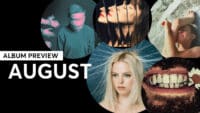Music

Gallery
The Greatest Album Covers Of Anton Corbijn
As The Boatman's Call turns 25, we look back on the most memorable album covers shot by photographer Anton Corbijn
“I have never understood models,” photographer Anton Corbijn once told The New York Times. “I find it really hard because the beauty was so obvious. I always found it more interesting to discover beauty.”
Honing his signature black and white, high contrast style in the Dutch underground music scene during the mid 70s, Corbijn moved to London and started making a name for himself as one of the most sought-after music photographers around.
The next few decades saw him score a handful of high-profile model shoots, but he was always more comfortable finding beauty in the faces of the world’s best musicians – photographing Bob Dylan, Joy Division, David Bowie, Tom Waits, Nirvana, Red Hot Chili Peppers, The Rolling Stones, Bruce Springsteen, Miles Davis, Kate Bush, Björk, The Smiths, U2, Depeche Mode and pretty much everyone else who ever took a main stage in the 80s and 90s.
Music videos followed (for practically all of the names above), as did a second career as a film director (including Ian Curtis biopic, Control), but it’s Corbijn’s album covers that stand as his most enduring contribution to music history.
As The Boatman’s Call turns 25, featuring Corbijn’s now iconic portrait of Nick Cave on the cover, we look back at some of his other career highlights – the works of art that we’ve all collected on scuffed vinyl sleeves and kept hidden behind cracked CD cases for generations.
The Joshua Tree (1987) – U2
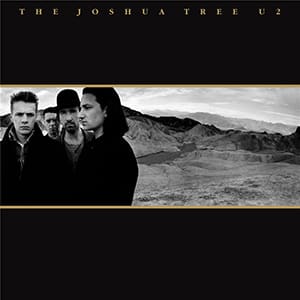
Corbijn has spent more time with U2 than nearly any other band, and his work has been used on the front, back and inserts of nearly every album since War. The Joshua Tree narrowly beats out Rattle And Hum in the bid for the most recognisable of Corbijn U2’s covers, even if it is slightly out of focus. Corbijn shot the band in the middle of the Mojave desert using a rented panorama camera that he didn’t have to time to practise with. “Fortunately there was a lot of light…” he later laughed.
Echo & The Bunnymen (1987) – Echo & The Bunnymen
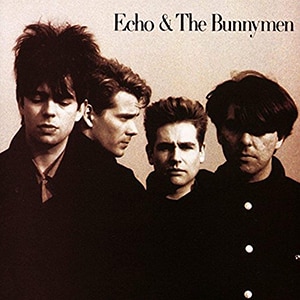
Echo & The Bunnymen released their eponymous album after four others – with Corbijn shooting the cover after he filmed the video for lead single, ‘The Game’. Playing with the same eye lines and positioning as The Joshua Tree, the Brazil shoot got hairy when the army pulled the band over and accused them of drug smuggling. “A military guy saw [singer] Ian McCulloch and said, ‘Ahhh…the Cure!’ I said, ‘No, Echo & Bunnymen.’ And the guy got furious,” Corbijn told Spin. “Suddenly we were taken out of the car, and they were pushing us up against the wall with their machine guns. They let us go, but for a while I had this vision that we’d all get kidnapped and chopped up just because Ian wasn’t in the Cure.”
Viva Hate (1988) – Morrisey

Morrissey wears Corbijn’s shadows like a mask on the cover of his debut solo album – which was far more striking than the bright and ugly 1997 rerelease. Getting near Lou Reed/Transformer levels of contrast on the image, the image was part of a set that was on show at The Hague in early 2022, shot on a series of night shoots in Sussex in 1988. “These evenings were sometimes a little depressing sifting through rubbish at times but the elation when you find a wonderful image is enormous and made it worth going through the motions,” Corbijn told Vogue.
Keep The Faith (1992) – Bon Jovi
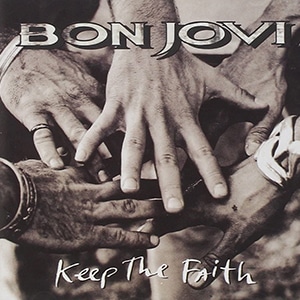
Bono once said of Corbijn that he “photographs the music more than the musicians”, which was never more true than on the album cover of Bon Jovi’s Keep The Faith – the last record to feature all five original members of the band – using a perfect backstage moment to capture the spirit of tracks like ‘I Believe’, ‘I’ll Sleep When I’m Dead’ and ‘In These Arms’. Clockwise from the top, that’s the hands of Jon Bon Jovi, Alec John Such, Richie Sambora, David Bryan and Tico Torres.
The Boatman’s Call (1997) – Nick Cave And The Bad Seeds

“After The Boatman’s Call came out I experienced a kind of embarrassment,” Nick Cave told fans on his own website. “I felt I had exposed too much… All the high drama, the tragedy and the hand wringing disgusted me… In time, however, I learned that the disgust was essentially the fear and shame experienced by someone who was swimming the uncertain waters between two boats — songs that were fictional and songs of an autobiographical or confessional nature. A radical change was occurring in my songwriting, despite myself, and such changes can leave one feeling extremely vulnerable, defensive and reactive.” Capturing the now famous portrait on a London backstreet, Corbijn somehow captures all of the above in a single shot – a high contrast shot that sees Cave refusing to make eye contact, driven, harrowed and caught between two worlds.
Songs Of Faith And Devotion (1993) – Depeche Mode
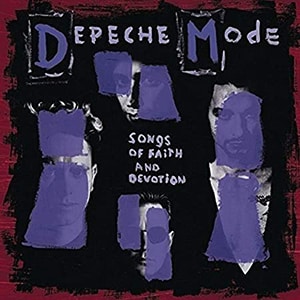
Since called “the fourth member” of Depeche Mode, Corbijn’s long-standing relationship with the band started with an NME shoot in 1981. “Maybe we should forget about that,” remembers Martin Gore in the catalogue for Corbijn’s latest exhibition. “Anton hated our music at the time and it was just a brief encounter – a job.” Picking things up again five years later to shoot the video for ‘A Question Of Time’, Corbijn suddenly rediscovered a band he could relate to. “I realised they had changed,” he says, “and somehow I realised how good their music and my visuals actually went together. But it was a surprise.” Getting more experimental for the album cover of Songs Of Faith And Devotion, Corbijn deconstructed his own photography in a ripped-up collage of faces.
Devils And Dust (2005) – Bruce Springsteen
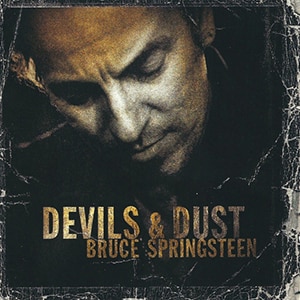
“I was a fan very early on, but I never managed to get a great picture of him until 2005”, Corbijn said of Bruce Springsteen, talking to Vulture a few years after his Devils And Dust cover flipped the mood on Springsteen’s Born In The USA iconography. “As a person to photograph he’s up there in a way with Tom Waits, I think. Two great American icons. They’re so mature, in a way. They’ve so become the people they want to be. It’s like the Dutch queen; she was by herself when I photographed her. The English Queen had her whole staff. I think that’s a sign of greatness. I spent some time with him in these pictures and it’s great to see somebody who’s their own boss.”
Sam’s Town (2006) – The Killers

“Faded glory” was the vibe Corbijn wanted for The Killers’ second album cover, shooting model and singer Felice LaZae against a trailer on the outskirts of Las Vegas, right next to a stuffed longhorn sheep. “I come unprepared,” he admitted to Interview Magazine. “I don’t have lights, I don’t have assistants, I just go and meet somebody and take a photograph. That’s really basic, and that’s how I used to work when I was 17 or 18 in Holland. I was given very little time to photograph people and I was very scared.”






